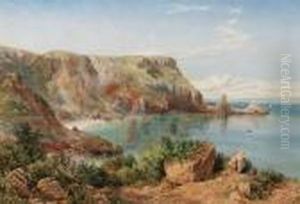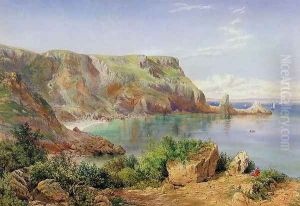John William Salter Paintings
John William Salter was an English naturalist, geologist, and paleontologist, best known for his work on the Silurian system and for his contributions to the study of trilobites, a group of extinct marine arthropods. He was born on December 15, 1820, in Bont Goch (Elerch) near Aberystwyth, Wales. Salter was initially apprenticed to a solicitor but soon developed a passion for geology and paleontology, which led him to abandon his legal training.
His geological career began when he joined the Geological Survey of Great Britain in 1842, an organization which played a key role in the development of geological science in the country. Working under the direction of Sir Roderick Impey Murchison, Salter made significant contributions to the understanding of British stratigraphy. He was particularly involved in the study of fossil collections and the illustration of specimens, his work greatly aiding in the classification and understanding of ancient life forms.
Salter's expertise in the field of paleontology was highly regarded, and his illustrations were praised for their accuracy and detail. In 1859, he was responsible for the publication of a monograph on trilobites, 'A Monograph of British Trilobites,' which became a standard reference in the field. His work helped to establish a systematic framework for the study of these early arthropods and influenced subsequent generations of paleontologists.
Despite his significant contributions to science, Salter's life was marked by financial difficulties and poor health. He struggled with the lack of a stable income, as much of his work for the Geological Survey was poorly compensated. His health began to decline in the 1860s, and he resigned from the Geological Survey in 1863, hoping to pursue a career as a consulting geologist, but this was not as successful as he had hoped.
John William Salter passed away on August 2, 1869, in London, leaving behind a legacy as one of the most important paleontologists of his era. His meticulous work and dedication to the field of geology have been recognized by the scientific community, and he remains a respected figure in the history of earth sciences. His contributions have provided valuable insights into the biodiversity and ecology of the past, particularly during the Silurian period, a critical time in the earth's geological history.






![[waterfall]](https://www.niceartgallery.com/imgs/961431/s/john-william-salter-waterfall-7bfd694d.jpg)












